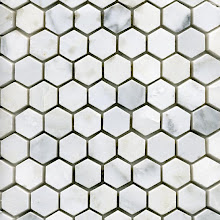The best way to maintain the appearance of any marble, granite, or limestone surface is to wash it frequently and to immediately rinse off any spilled materials. Natural stone can be cleaned periodically with a non-fat, mild detergent (such as Windex) or lukewarm water, and then rinsed thoroughly. Murphy's Oil Soap can also be used but might darken the stone somewhat.
DO NOT USE TILE-X or other abrasive cleaners on your natural stone, as this can result in scratches and dull areas.
The best defense against stains is prevention. However, stains do occur and can most often be removed with a poultice. A poultice is made with powdered whiting and hydrogen peroxide. Whiting is sold in most paint stores. The poultice should be applied as described below for each particular type of stain.
The most problematic staining materials are as follows: oils, mayonnaise, butter, wine, and meat.
Sealers should be used for floors or counters. We recommend that a silicone-based sealer be applied at least twice a year. You may find that you will need to do so more frequently. When you notice that water is no longer beading and dark spots begin to occur, it is time to reseal. Your stone from Carrera was sealed twice: once after fabrication, and once after installation. This treatment should suffice for at least six months. As a rule, we recommend that you seal the counters two to three times a year. Quarts of sealer, good for approximately 200 square feet, are available through Carrera Marble.
Etch Marks:
Many substances will not only discolor marble and granite but will etch the surface. Lemon juice, soft drinks, wine, and other acidic substances can all cause etch marks. Etching of marble can be corrected, but we suggest that this only be done by a professional.
Organic Stains:
Organic stains are caused by tea, coffee, soft drinks and fruit juices. If the counter is properly sealed (see above), stains from these elements can be reduced.
Organic stains can be removed by applying the following:
1. Mix a poultice consisting of powdered whiting (sold in most paint stores) and 20% hydrogen peroxide (hair bleach) to form a thick paste.
2. Apply a ½" thick layer of this mixture over the stain.
3. To keep the poultice from drying too rapidly, cover the poultice with a piece of plastic kitchen wrap, held in place with masking tape.
4. Leave this in place overnight--for very stubborn stains, you may need 48 hours.
5. If, after the first application, the stain is still noticeable, repeat the application, adding a few drops of household ammonia to the poultice mixture.
6. After the stain disappears, remove the application, rinse with clean water and wipe dry.
Oil Stains:
Oil stains are caused by such substances as butter, cream, milk, peanut butter, hand lotions, mustard and other fatty substances with greasy ingredients. These types of stains include olive oil. The stains are usually circular and are often darker in the centers. They are often quite difficult to remove because they tend to penetrate deeper than most other stains.
1. The first step is always to locate and remove the source of the stain.
2. Wash the surface with ammonia, and then rinse with plenty of clean, lukewarm water.
If the stain persists, continue with the following steps:
1. Make a poultice with acetone and whiting to form a thick paste.
2. Apply a ½" thick layer of this mixture over the stained area.
3. To keep the acetone from evaporating and the poultice from drying too rapidly, cover the poultice with a piece of plastic kitchen wrap, held in place with masking tape.
4. Leave the application in place overnight (stubborn stains may require 48 hours).
Rust Stains:
Rust stains are invariably caused by metallic objects in the presence of moisture. Rust stains are usually orange or brown in color. If these stains are noticed promptly, they can sometimes be removed simply by rubbing hard with a dry cloth, especially if the surface has been waxed. If the stain doesn't come off, proceed with the following treatment:
- Make a poultice of a commercial liquid rust remover mixed with whiting to form a thick paste.
- Apply a ½" thick layer of this mixture over the stained area.
- Place a piece of plastic kitchen wrap over the mixture to secure it in place.
- Leave the application in place overnight.
- Remove the poultice mixture and rub the marble surface with a dry cloth.
Soot and Smoke:
1. Scrub the surface with a non-fat detergent (Windex) and a stiff fiber brush, and then rinse with clean water.
If this still leaves noticeable dirt and stains, continue with the following steps:
2. Make a poultice consisting of baking soda or some other alkaline cleaner, mixed with laundry bleach, to form a thick paste.
3. Spread on the stained surface to a thickness of about ½".
4. Cover with a damp cloth to keep the poultice damp.
5. Leave in place overnight.
6. Remove by wetting and or scraping with a wooden spatula, plywood, or stiff cardboard.





Nice Blog!!! Thanks for sharing this. Stonera Systems Pvt .Ltd is a leading manufacturer of Brushes for stone, Granite, Marble, abrasives for Granite, Ceramic, Marble and Natural Stone Processing Industries. We assure our products give you high performance at cost-effective pricing for your finished goods.
ReplyDeleteStain Remover for Marble
ReplyDeleteNice information this blog thanks for sharing...
Arabescato